
By Jill Suttie | Greater Good Magazine
We are spending more time indoors and online. But recent studies suggest that nature can help our brains and bodies to stay healthy.
I’ve been an avid hiker my whole life. From the time I first strapped on a backpack and headed into the Sierra Nevada Mountains, I was hooked on the experience, loving the way being in nature cleared my mind and helped me to feel more grounded and peaceful.
But, even though I’ve always believed that hiking in nature had many psychological benefits, I’ve never had much science to back me up…until now, that is. Scientists are beginning to find evidence that being in nature has a profound impact on our brains and our behavior, helping us to reduce anxiety, brooding and stress, and increase our attention capacity, creativity, and our ability to connect with other people.
Related Article: The Frequency of Life: Getting Back to Nature For Good Health
“People have been discussing their profound experiences in nature for the last several 100 years—from Thoreau to John Muir to many other writers,” says researcher David Strayer, of the University of Utah. “Now we are seeing changes in the brain and changes in the body that suggest we are physically and mentally more healthy when we are interacting with nature.”
While he and other scientists may believe nature benefits our well-being, we live in a society where people spend more and more time indoors and online—especially children. Findings on how nature improves our brains bring added legitimacy to the call for preserving natural spaces—both urban and wild—and for spending more time in nature in order to lead healthier, happier, and more creative lives.
Here are some of the ways that science is showing how being in nature affects our brains and bodies.

1. Being in nature decreases stress
It’s clear that hiking—and any physical activity—can reduce stress and anxiety. But, there’s something about being in nature that may augment those impacts.
In one recent experiment conducted in Japan, participants were assigned to walk either in a forest or in an urban center (taking walks of equal length and difficulty) while having their heart rate variability, heart rate, and blood pressure measured. The participants also filled out questionnaires about their moods, stress levels, and other psychological measures.
Results showed that those who walked in forests had significantly lower heart rates and higher heart rate variability (indicating more relaxation and less stress), and reported better moods and less anxiety, than those who walked in urban settings. The researchers concluded that there’s something about being in nature that had a beneficial effect on stress reduction, above and beyond what exercise alone might have produced.
In another study, researchers in Finland found that urban dwellers who strolled for as little as 20 minutes through an urban park or woodland reported significantly more stress relief than those who strolled in a city center.
The reasons for this effect are unclear, but scientists believe that we evolved to be more relaxed in natural spaces. In a now-classic laboratory experiment by Roger Ulrich of Texas A&M University and colleagues, participants who first viewed a stress-inducing movie, and were then exposed to color/sound videotapes depicting natural scenes, showed much quicker, more complete recovery from stress than those who’d been exposed to videos of urban settings.
These studies and others provide evidence that being in natural spaces— or even just looking out of a window onto a natural scene—somehow soothes us and relieves stress.
2. Nature makes you happier and less brooding
I’ve always found that hiking in nature makes me feel happier, and of course, decreased stress may be a big part of the reason why. But, Gregory Bratman, of Stanford University, has found evidence that nature may impact our mood in other ways, too.
In one 2015 study, he and his colleagues randomly assigned 60 participants to a 50-minute walk in either a natural setting (oak woodlands) or an urban setting (along a four-lane road). Before and after the walk, the participants were assessed on their emotional state and on cognitive measures, such as how well they could perform tasks requiring short-term memory. Results showed that those who walked in nature experienced less anxiety, rumination (focused attention on negative aspects of oneself), and negative affect, as well as more positive emotions, in comparison to the urban walkers. They also improved their performance on memory tasks.
In another study, he and his colleagues extended these findings by zeroing in on how walking in nature affects rumination—which has been associated with the onset of depression and anxiety—while also using fMRI technology to look at brain activity. Participants who took a 90-minute walk in either a natural setting or an urban setting had their brains scanned before and after their walks and were surveyed on self-reported rumination levels (as well as other psychological markers). The researchers controlled for many potential factors that might influence rumination or brain activity—for example, physical exertion levels as measured by heart rates and pulmonary functions.
Even so, participants who walked in a natural setting versus an urban setting reported decreased rumination after the walk, and they showed increased activity in the subgenual prefrontal cortex, an area of the brain whose deactivation is affiliated with depression and anxiety—a finding that suggests nature may have important impacts on mood.
Bratman believes results like these need to reach city planners and others whose policies impact our natural spaces. “Ecosystem services are being incorporated into decision making at all levels of public policy, land use planning, and urban design, and it’s very important to be sure to incorporate empirical findings from psychology into these decisions,” he says.
3. Nature relieves attention fatigue and increases creativity.
Today, we live with ubiquitous technology designed to constantly pull for our attention. But many scientists believe our brains were not made for this kind of information bombardment, and that it can lead to mental fatigue, overwhelm, and burnout, requiring “attention restoration” to get back to a normal, healthy state.
Strayer is one of those researchers. He believes that being in nature restores depleted attention circuits, which can then help us be more open to creativity and problem-solving.
“When you use your cell phone to talk, text, shoot photos, or whatever else you can do with your cell phone, you’re tapping the prefrontal cortex and causing reductions in cognitive resources,” he says.
In a 2012 study, he and his colleagues showed that hikers on a four-day backpacking trip could solve significantly more puzzles requiring creativity when compared to a control group of people waiting to take the same hike—in fact, 47 percent more. Although other factors may account for his results—for example, the exercise or the camaraderie of being out together—prior studies have suggested that nature itself may play an important role. One in Psychological Science found that the impact of nature on attention restoration is what accounted for improved scores on cognitive tests for the study participants.
This phenomenon may be due to differences in brain activation when viewing natural scenes versus more built-up scenes—even for those who normally live in an urban environment. In a recent study conducted by Peter Aspinall at Heriot-Watt University, Edinburgh, and colleagues, participants who had their brains monitored continuously using mobile electroencephalogram (EEG) while they walked through an urban green space had brain EEG readings indicating lower frustration, engagement, and arousal, and higher meditation levels while in the green area, and higher engagement levels when moving out of the green area. This lower engagement and arousal may be what allows for attention restoration, encouraging a more open, meditative mindset.
It’s this kind of brain activity—sometimes referred to as “the brain default network”—that is tied to creative thinking, says Strayer. He is currently repeating his earlier 2012 study with a new group of hikers and recording their EEG activity and salivary cortisol levels before, during, and after a three-day hike. Early analyses of EEG readings support the theory that hiking in nature seems to rest people’s attention networks and to engage their default networks.
Strayer and colleagues are also specifically looking at the effects of technology by monitoring people’s EEG readings while they walk in an arboretum, either while talking on their cell phone or not. So far, they’ve found that participants with cell phones appear to have EEG readings consistent with attention overload, and can recall only half as many details of the arboretum they just passed through, compared to those who were not on a cell phone.
Though Strayer’s findings are preliminary, they are consistent with other people’s findings on the importance of nature to attention restoration and creativity.
“If you’ve been using your brain to multitask—as most of us do most of the day—and then you set that aside and go on a walk, without all of the gadgets, you’ve let the prefrontal cortex recover,” says Strayer. “And that’s when we see these bursts in creativity, problem-solving, and feelings of well-being.”
4. Nature may help you to be kind and generous
Whenever I go to places like Yosemite or the Big Sur Coast of California, I seem to return to my home life ready to be more kind and generous to those around me—just ask my husband and kids! Now some new studies may shed light on why that is.
In a series of experiments published in 2014, Juyoung Lee, GGSC director Dacher Keltner, and other researchers at the University of California, Berkeley, studied the potential impact of nature on the willingness to be generous, trusting, and helpful toward others, while considering what factors might influence that relationship.
As part of their study, the researchers exposed participants to more or less subjectively beautiful nature scenes (whose beauty levels were rated independently) and then observed how participants behaved playing two economics games—the Dictator Game and the Trust Game—that measure generosity and trust, respectively. After being exposed to the more beautiful nature scenes, participants acted more generously and more trusting in the games than those who saw less beautiful scenes, and the effects appeared to be due to corresponding increases in positive emotion.
In another part of the study, the researchers asked people to fill out a survey about their emotions while sitting at a table where more or less beautiful plants were placed. Afterward, the participants were told that the experiment was over and they could leave, but that if they wanted to they could volunteer to make paper cranes for a relief effort program in Japan. The number of cranes they made (or didn’t make) was used as a measure of their “prosociality” or willingness to help.
Related Article: Creating Connection: Finding Balance Between Nature and Man.
Results showed that the presence of more beautiful plants significantly increased the number of cranes made by participants and that this increase was, again, mediated by positive emotion elicited by natural beauty. The researchers concluded that experiencing the beauty of nature increases positive emotion—perhaps by inspiring awe, a feeling akin to wonder, with the sense of being part of something bigger than oneself—which then leads to prosocial behaviors.
Support for this theory comes from an experiment conducted by Paul Piff of the University of California, Irvine, and colleagues, in which participants staring up a grove of very tall trees for as little as one minute experienced measurable increases in awe, and demonstrated more helpful behavior and approached moral dilemmas more ethically, than participants who spent the same amount of time looking up at a high building.
5. Nature makes you “feel more alive”
With all of these benefits to being out in nature, it’s probably no surprise that something about nature makes us feel more alive and vital. Being outdoors gives us energy, makes us happier, helps us to relieve the everyday stresses of our overscheduled lives, opens the door to creativity, and helps us to be kind to others.
No one knows if there is an ideal amount of nature exposure, though Strayer says that longtime backpackers suggest a minimum of three days to really unplug from our everyday lives. Nor can anyone say for sure how nature compares to other forms of stress relief or attention restoration, such as sleep or meditation. Both Strayer and Bratman say we need a lot more careful research to tease out these effects before we come to any definitive conclusions.
Still, the research does suggest there’s something about nature that keeps us psychologically healthy, and that’s good to know…especially since nature is a resource that’s free and that many of us can access by just walking outside our door. Results like these should encourage us as a society to consider more carefully how we preserve our wilderness spaces and our urban parks.
And while the research may not be conclusive, Strayer is optimistic that science will eventually catch up to what people like me have intuited all along—that there’s something about nature that renews us, allowing us to feel better, to think better, and to deepen our understanding of ourselves and others.
“You can’t have centuries of people writing about this and not have something going on,” says Strayer. “If you are constantly on a device or in front of a screen, you’re missing out on something that’s pretty spectacular: the real world.”
About The Author
Jill Suttie, Psy.D., is Greater Good‘s book review editor and a frequent contributor to the magazine.


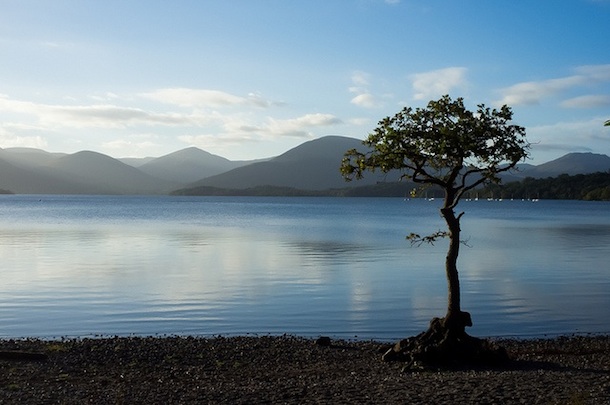

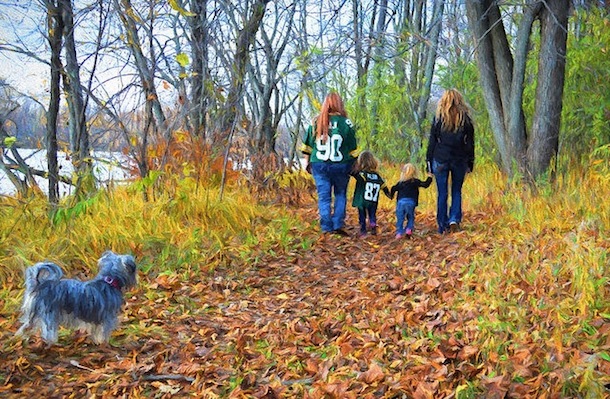
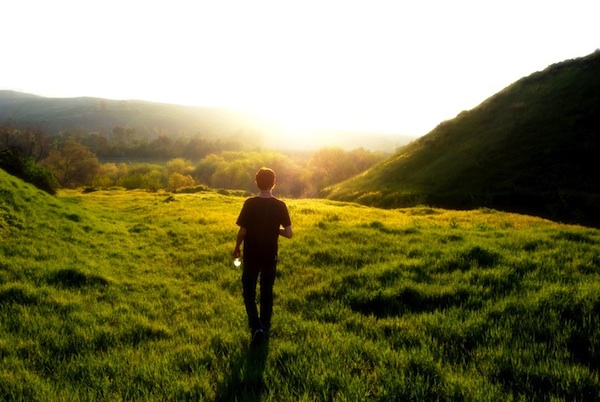




 By
By 

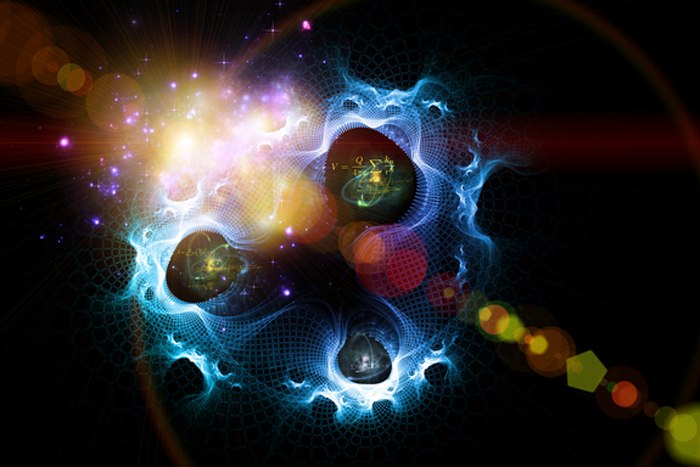 As you may or may not know, the study of Quantum Mechanics is the branch of physics that focuses on “the very small”. Not necessarily what we would consider being “matter”, but rather the cosmically tiny common subjects such as atoms and quarks that bond & unite energetically to create matter and bring it into physical 3D existence. I use the quantum reference here as it applies to life because there are two very simple and very small, yet VERY significant things you can do to actually guarantee your own happiness…
As you may or may not know, the study of Quantum Mechanics is the branch of physics that focuses on “the very small”. Not necessarily what we would consider being “matter”, but rather the cosmically tiny common subjects such as atoms and quarks that bond & unite energetically to create matter and bring it into physical 3D existence. I use the quantum reference here as it applies to life because there are two very simple and very small, yet VERY significant things you can do to actually guarantee your own happiness…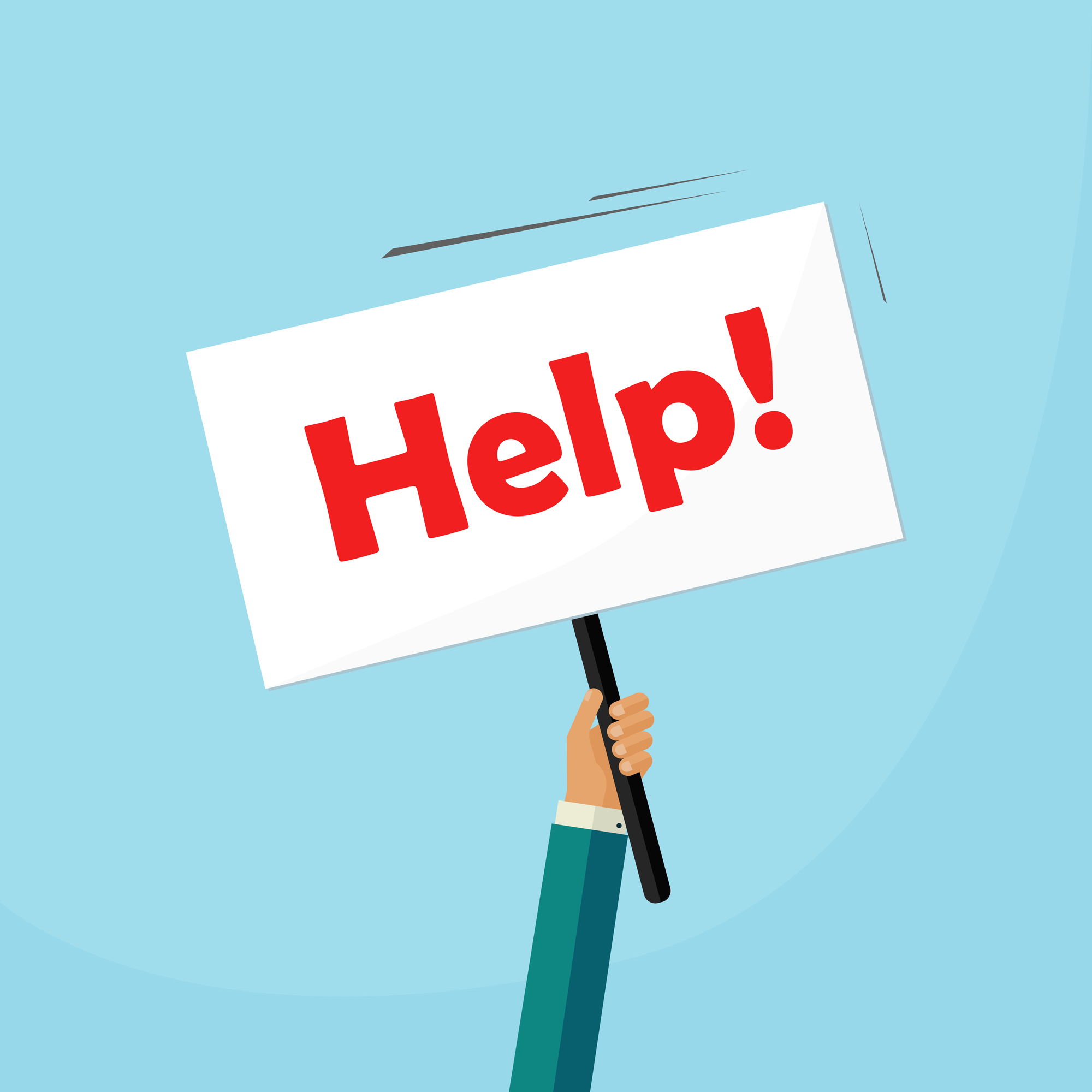 If you’re anything like me, you may have a hard time asking for help when it comes to personal stuff. If I can’t reach something off a shelf, sure I’m good with requesting some assistance, but when it gets a bit deeper than that, I tend to wanna handle everything on my own; retreat inward and soak it in a little “me-time” solitude. My mental cave is always warm and welcoming with popcorn made and a Netflix marathon ready to go. But sometimes, when the popcorn’s run out and your ass is asleep from too much couch-potato-ing, you reach a point where your ego allows you to understand that your ONLY way out to reach a solution is another’s perspective.
If you’re anything like me, you may have a hard time asking for help when it comes to personal stuff. If I can’t reach something off a shelf, sure I’m good with requesting some assistance, but when it gets a bit deeper than that, I tend to wanna handle everything on my own; retreat inward and soak it in a little “me-time” solitude. My mental cave is always warm and welcoming with popcorn made and a Netflix marathon ready to go. But sometimes, when the popcorn’s run out and your ass is asleep from too much couch-potato-ing, you reach a point where your ego allows you to understand that your ONLY way out to reach a solution is another’s perspective.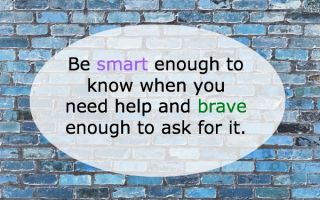


 When we think of a river flowing, non-attachment is kind of like that when it comes to our emotions. Rather than letting one particular emotion dam up the waters of our soul, we simply let it run its course without becoming enthralled or entangled in its web. With negative emotions, we tend to let them take the wheel and direct our thoughts, actions, and reactions. And while we can see how asinine this is when others do it, while we ourselves are in the throes of anger, we feel completely justified because we’ve allowed the emotion to take control, overpower us and run wild. We are no longer connected to our hearts and therefore are disconnected from the targets (other people) now receiving our wrath.
When we think of a river flowing, non-attachment is kind of like that when it comes to our emotions. Rather than letting one particular emotion dam up the waters of our soul, we simply let it run its course without becoming enthralled or entangled in its web. With negative emotions, we tend to let them take the wheel and direct our thoughts, actions, and reactions. And while we can see how asinine this is when others do it, while we ourselves are in the throes of anger, we feel completely justified because we’ve allowed the emotion to take control, overpower us and run wild. We are no longer connected to our hearts and therefore are disconnected from the targets (other people) now receiving our wrath.

 I felt compelled to write about ‘being the change’ this week after all of the negative news going on in the world lately. I won’t get into it, as I’m sure most of you are aware of what’s been going on but I just wanted to take the time to remind everyone that it all starts with each and every one of us. We all matter and we all mean something. Somewhere along the line, it became acceptable; almost required to teach us that we are insignificant and we began to lost our luster, our soul shine…and that is the greatest lie ever taught. We are all significant, we are divine, we are love. Don’t ever forget that because once you remember, the world will reflect a place that won’t need changing.
I felt compelled to write about ‘being the change’ this week after all of the negative news going on in the world lately. I won’t get into it, as I’m sure most of you are aware of what’s been going on but I just wanted to take the time to remind everyone that it all starts with each and every one of us. We all matter and we all mean something. Somewhere along the line, it became acceptable; almost required to teach us that we are insignificant and we began to lost our luster, our soul shine…and that is the greatest lie ever taught. We are all significant, we are divine, we are love. Don’t ever forget that because once you remember, the world will reflect a place that won’t need changing.